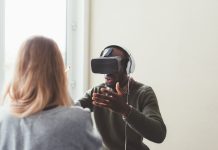If you are reading this article on a mobile device, you already are tapped into the most powerful technological revolution of the last decade. Mobile devices have changed the way we access and process information. They also have changed the nature of training programs. With the use of mobile devices, learners can learn anywhere and at any time.
Mobile technologies can be especially important for crucial safety training. Since 1970, the United States has focused on improving safety regulation and training, and has reduced its worker illness and injury rate by nearly 70 percent. Still, an estimated 3.9 million injuries and illnesses have occurred in the workplace in the last five years, and 4,500 workers will die in any given year, according to data derived from the Bureau of Labor Statistics. The human cost is incalculable, and the financial cost from direct and indirect medical costs and lost work runs into the billions.
Building a culture of safety within a company is the best way to reduce injury rates. A blended training program that combines in-person instruction and eLearning is a proven way to achieve this goal. The dynamic changes in the landscape of handheld smart devices have opened up a new avenue for training. Enabling workers with the ability to learn about safety on their own mobile devices, mobile learning—or mLearning—now should be an integral part of worker training.
Supplement, Not a Replacement
Traditional eLearning is a good way to introduce safety concepts and to deepen understanding on a topic. Effective eLearning programs can target specific job roles or hazards, and engage learners visually and through interactive exercises. Mobile learning, however, is not simply transferring a pre-existing PC-based program into a mobile-friendly format. Small devices have limited interactivity, and users have limited attention spans. Learners are less likely to complete a long training course or certification program, such as OSHA’s 10-hour training, on a mobile device. On-the-go employees might be more likely to be distracted or interrupted, so lengthy, immersive learning experiences may not be ideal. Battery life, connectivity, device ownership, screen size, security, and bring-your-own-device policies can all affect employees’ learning effectiveness. As a result, goals should be immediate and simple, and content should be bite-sized. Rapid access to information is vital.
Mobile learning is best used not as a replacement for other options, but as a supplement or reinforcement for learning. Using mLearning is a good way to help workers retain what they learned through quick refreshers and to address some moment-of-need learning. It needs to offer more than just eLearning modules and reach more than just front-line employees. The right kinds of content for the right context or device will allow companies to meet the needs of learners beyond a one-time training event.
A strong mobile experience requires simplicity. Mobile training programs should use only the content that is relevant to a mobile learner and discard the rest, resulting in a simple and focused experience. Mobile learning is a way to deliver different learning experiences, so it should be appropriately applied. Some audiences, such as executives or field technicians, are highly dependent on mobile devices, while others are less dependent, such as the employee on the shop floor. Each of these groups participates in learning at varying levels of detail and through different delivery approaches.
A blended learning program takes full advantage of all learning mediums, including mobile devices. It begins with a well-designed learning experience, which can be a curated collection of resources and activities for learning as it relates to a specific need. For example, a training expert can build a collection of resources on a specific topic (e.g., hazard communications). A blended curriculum can extend learning by providing additional links, job aides, tutorials, examples, training, and more. It also can include learning moments for supervisors and leadership that encourages the transfer of safe behaviors to the job, and sets the tone for a corporate culture of safety.
Considerations to Keep in Mind
In planning an mLearning strategy, consider the devices that will support portability goals and the availability of those devices to the workforce. Mobile devices are already in the hands of nearly every employee, whether a company’s Information Technology (IT) department has planned for them or not. Regardless of whether employees are using a Samsung Note or an iPhone 5, a well-planned mobile strategy considers the organization’s key objectives instead of quick reactions to new technologies or competitors’ initiatives. A company’s mobile strategy needs to align with its IT and security framework. It needs to consider the types of devices being used, the increased security risks, and the amount of support both employees and devices will receive. The best strategies require a strong partnership between the Learning and Development group and the IT department.
Mobile learning can improve employee performance, productivity, and retention but does not meet every moment of need. Consider the broader training curriculum and the goals of your organization and workforce. Integrating mLearning into an overall training strategy will help to foster a culture of ongoing learning and safe behaviors that extend beyond one-time training events. Today, immediate access to critical information can enable learning, and ultimately, reduce injury and illness rates, improving business performance along the way.
Mark Ward is vice president and general manager of UL Workplace Health & Safety. He was most recently the director of sales and marketing for the organization. Before arriving at UL, Ward held several senior global sales and services positions at Thermo Fisher Scientific. He also has led a variety of commercial, operational, and product management teams (each focused on driving customer value with technology-based applications) at companies including IBM, Dendrite International, and Parametric Technologies. Ward received his Bachelor of Science degree in industrial engineering from the University of Wisconsin and his Master’s degree in financial planning and services at the University of Dallas. He has been recognized with numerous awards for role-model leadership and business results.



